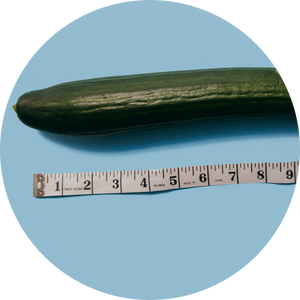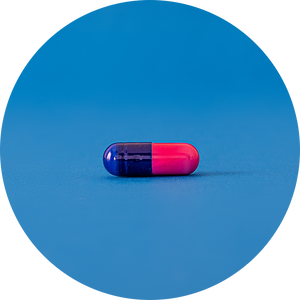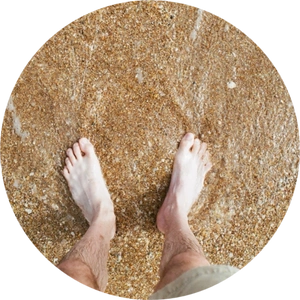The health benefits of exercise really can’t be overstated.
Not only does exercise help to improve physical and mental health, it can even improve your sexual health.
There are tons of options for how you approach exercising. Depending on what you want to do, your workout regimen might look very different from your gym buddy’s.
If your goal is building muscle mass, here are some of the best tips for getting stronger and bigger, fast.
How Do Muscles Grow?
Creating an effective workout routine will be much easier with a good understanding of how muscles grow and strengthen.
Your muscles are made up of thousands of tightly wound elastic fibers. As a result, your muscles are incredibly adaptable, especially when compared to solid and rigid bone structure.
Lifting weights that put your muscles under stress leads to micro tears and tiny rips in these muscle fibers. Technically, this is referred to as “muscle injury.” While that might sound like the wrong outcome, these micro tears are an important step for muscle growth so long as the tears aren’t severe.
When your muscles undergo stress like this, the cells that make up your muscles are "activated" and attempt to repair your damaged muscle fiber and tissue. As a result of filling in this damage, your muscles grow larger as these new cells grow and heal the damage.
This is why muscle recovery and rest days are so important, and why you should take pride in your post-weight training muscle soreness.
Human growth hormone (HGH) also plays a major role in muscle growth. HGH is responsible for sending new cells to repair your “injured” muscles and creating new blood vessels that provide more oxygen to your muscles.
In addition to HGH, other hormones like insulin, cortisol, and testosterone play a factor in muscle growth and management. A deficiency in any of these hormones can make it harder to build muscle or maintain their strength and density.
What Are the Best Ways To Gain Muscle?
Lifting weights is the first thing that comes to mind when you think about muscle-building.
While strength training is definitely a major part of gaining muscle strength and muscle mass, it’s not the only factor involved. To get the best results from working out, you’ll need to make a few lifestyle changes.
There are three crucial elements to efficiently building muscle:
Diet
Nutrition is absolutely key for muscle protein synthesis and massive gains. For many Americans, you may need to completely overhaul your current diet to focus on two important things: eating more food generally and increasing your protein intake.
Most people try to stick to 2,000 calories daily, or naturally fall in around this area, to maintain their current weight. Since you're trying to grow your muscles, you’ll need to increase your daily calorie intake. Calories are fuel for your body and will help you build more muscle from the various proteins you're eating.
Most athletes consume 17 to 19 calories for every pound that they weigh, which typically equates to 500 surplus calories. A basic guideline is to start with roughly 15 to 20 calories per pound and make changes as necessary.
Along with eating more food in general, you'll likely need to increase your protein intake. Your body uses the essential amino acids found in proteins for a wide variety of purposes, including muscle growth.
Your body needs to store more protein than it breaks down to build muscle mass. Quite simply: the more protein your body has, the more it can use on your muscles.
It’s best to start off your new diet with by focusing on one gram of protein for every pound that you weigh and increase if needed. Stick to healthy proteins like chicken breast, whey protein shakes, legumes like lentils, and quinoa instead of gunning the red meat and full-fat dairy products.
Whatever calories are left should be focused on quality carbohydrates like whole grains, fruits and vegetables, and fats in order to create a healthy and balanced diet. Most animal products have a ton of protein, so you’ll end up including a lot of meat and dairy in your diet. Be sure to include plenty of beans (soy in particular) and nuts as these are high in protein and other important nutrients, vitamins, and minerals.
Exercise
The only way to effectively build muscle is to create micro-tears in your muscle fibers. The easiest way to do this is to lift weights. Before you go out and start curling some dumbbells though, there are a few things that you should know that can help maximize your results.
For starters, focus on muscle groups as opposed to individual muscles. Curling can help your biceps grow, but this concentrated exercise largely benefits that one muscle. Placing an emphasis on muscle groups will help you work out several muscles during every repetition. Exercises such as squats, pushups, lunges, planks, deadlifts, pull-ups, and bench press all work multiple muscles at one time.
A 30-minute workout is a great way to maintain weight and slowly build muscle, but you’ll probably need to work out for 60 minutes or more, focusing on multiple muscles in ever group, to really build strength.
Focus on using heavy weights with few repetitions and move slowly. Holding weights at the peak of a movement while your muscles are strained can result in more tearing in muscle fibers, too.
Many exercise plans also include cardio, though these exercises can be counterintuitive to building muscle. Cardio is a tremendously beneficial exercise in most cases as it burns fat, improves cardiovascular strength, and can manage metabolic conditions; however, it can also burn muscle and eliminate gains you’ve made by lifting weights.
Rest
Your muscles need time to properly heal and ultimately grow. The healing process takes some time, and you'll need to plan for resting periods during your new exercise routine.
You should only be hitting the weights hard three to four times a week. High intensity workouts back-to-back can lead to injury and don't allow your muscles time to repair themselves.
On lighter workout days in between, focus on flexibility and balance exercises like stretching and yoga to help keep your muscles loose without overworking them. It’s best to focus on one muscle group for each major workout day, such as arms, legs, and your back. This rotation approach gives your muscles extra time to rest.
In addition to building in rest days for your exercises regimen, you may need to get more sleep each night to increase these effects. Your body uses sleep to make important repairs to your muscles. For best results, you should be getting between seven and nine hours of sleep every night.
The Takeaway
It takes real work to gain muscle strength and muscle mass, but a few changes can get you stronger in no time.
Depending on the intensity and frequency of your new muscle-building routine, you might not see results for the first few weeks. You will most likely shed some excess weight, however, which can still provide measurable health benefits for many men. Plus, any exercise routine will be good for your general physical and mental health.
After two to three months of regular lifting, you should start to notice some changes. As long as you maintain a healthy diet, go hard in the gym, and get plenty of rest, muscle growth is in your future.
Sources
What Are Compound Exercises? | Columbia Association
Fat and Calories: The Difference & Recommended Intake | Cleveland Clinic













